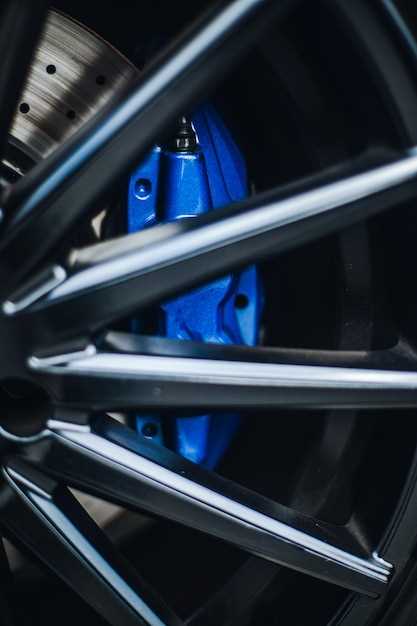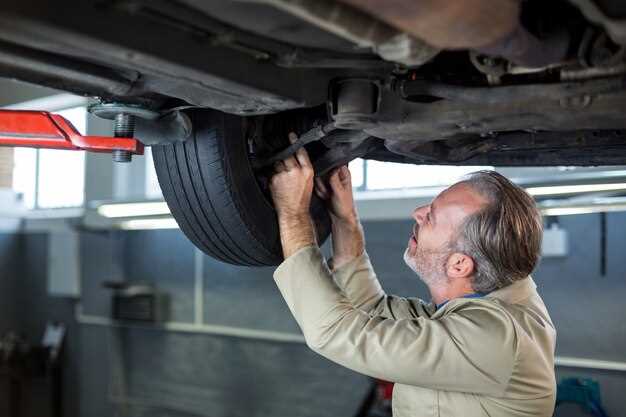
When it comes to enhancing your vehicle’s overall performance, suspension tuning plays a critical role. The right setup not only improves handling and stability but also significantly increases driver comfort. By adjusting the suspension system to cater to your specific driving style and conditions, you can achieve a harmonious balance between performance and comfort.
Understanding the intricacies of your suspension system is essential for anyone looking to improve their vehicle’s handling characteristics. Factors such as spring rates, damping settings, and ride height all contribute to the overall effectiveness of your suspension setup. Fine-tuning these elements can lead to greater control during spirited driving, while still maintaining a comfortable ride for day-to-day commutes.
This article will delve into effective suspension tuning tips that will allow you to maximize both performance and comfort. Whether you’re a weekend racer or simply want a better driving experience, these insights will guide you in achieving a suspension setup tailored to your individual needs.
Adjusting Dampers for Optimal Cornering Stability

To enhance vehicle handling during cornering, proper damper adjustment is crucial. Dampers, or shock absorbers, play a vital role in controlling the suspension’s response to road imperfections and body movement. A well-tuned damper setup can significantly improve riding stability and make a vehicle more responsive in turns.
Starting with compression adjustment, it is essential to find the right balance. Too much compression damping will cause the suspension to become too rigid, leading to a harsh ride and reduced tire contact with the ground. Conversely, too little compression can result in excessive body roll and a lack of stability when cornering. Aim for a setup that provides enough firmness to support the vehicle’s weight during turns while allowing adequate movement to navigate bumps smoothly.
Next, focus on rebound adjustment. This setting controls how quickly the damper returns to its original position after compressing. A faster rebound can keep the tires in contact with the road better, enhancing cornering grip. However, if set too high, it may lead to loss of traction as the suspension struggles to keep up with aggressive weight transfer. An optimal rebound setup should restore the suspension to balance swiftly without overshooting, ensuring consistent handling through corners.
Additionally, consider the effects of weight distribution and driving style when adjusting dampers. A vehicle that tends to understeer may benefit from a stiffer setup on the rear dampers, while an oversteering vehicle could require stiffer front dampers. Test and refine various setups to identify what suits your specific riding characteristics and driving style, ensuring that the adjustments yield improved cornering stability.
Finally, regularly evaluate the damper performance during different types of driving conditions. Changes in weather, track surface, and tire wear can all impact suspension behavior. By consistently monitoring and fine-tuning damper settings, you can maintain optimal performance, achieving a suspension that not only enhances cornering capability but also provides a comfortable and controlled riding experience.
Tire Pressure’s Impact on Ride Comfort and Grip

Tire pressure plays a crucial role in the overall performance of a vehicle’s suspension system. Properly inflated tires contribute significantly to both ride comfort and grip, directly impacting how the vehicle handles on the road.
When tire pressure is too low, the increased sidewall flex causes a softer ride, which may seem comfortable at first. However, this can lead to excessive tire wear and reduced handling precision. The suspension has to work harder to maintain control, which can result in a bouncier ride and less feedback from the road. In contrast, over-inflated tires can create a harsher driving experience, as the rigid structure limits the tire’s ability to absorb bumps and vibrations.
Optimal tire pressure ensures that the tire maintains its intended shape while in motion, allowing the suspension to perform effectively. This balance not only enhances grip but also improves the vehicle’s stability, especially during cornering. A well-tuned suspension system requires the appropriate tire pressure to function correctly, as it relies heavily on the contact patch between the tires and the road surface.
Regularly checking and adjusting tire pressure based on the manufacturer’s specifications is essential for achieving the best possible ride comfort and grip. By maintaining the correct pressure, drivers can enjoy a smoother ride while enhancing their vehicle’s handling capabilities.
In summary, tire pressure is a pivotal factor in suspension tuning. Maintaining optimal levels is vital for achieving the right balance between comfort and performance, ensuring an enjoyable and responsive driving experience.
Choosing Springs and Anti-Roll Bars for Your Driving Style
When it comes to suspension tuning, selecting the right springs and anti-roll bars is crucial for achieving your desired vehicle handling and comfort levels. The spring type directly influences your vehicle’s ride height, weight distribution, and overall responsiveness. For a balance between comfort and performance, consider progressive springs, which offer a softer ride under normal conditions but stiffen when more load is applied. This feature allows for a comfortable daily drive while providing improved handling during spirited driving.
On the other hand, if you prioritize performance and aggressive cornering, linear springs may be more appropriate. They deliver consistent response throughout their compression range, enhancing stability and control during aggressive maneuvers, but can sacrifice some ride comfort on rough roads.
In addition to springs, anti-roll bars play a significant role in controlling body roll during cornering. A larger diameter bar will stiffen the suspension, reducing tilt and improving lateral stability. This can lead to a more focused and athletic feel while driving. However, increasing anti-roll bar stiffness can compromise comfort by transmitting more road imperfections to the cabin.
For those who value comfort but want to maintain decent handling characteristics, consider adjustable anti-roll bars. These allow you to fine-tune your setup based on driving conditions, providing the best of both worlds. Experimenting with different settings gives you the flexibility to find the right balance for your unique driving style and needs.
Ultimately, the choice of springs and anti-roll bars should reflect your driving habits and the conditions you typically encounter. Prioritize your comfort and desired handling traits to create a suspension setup that not only improves performance but also enhances your overall riding experience.





